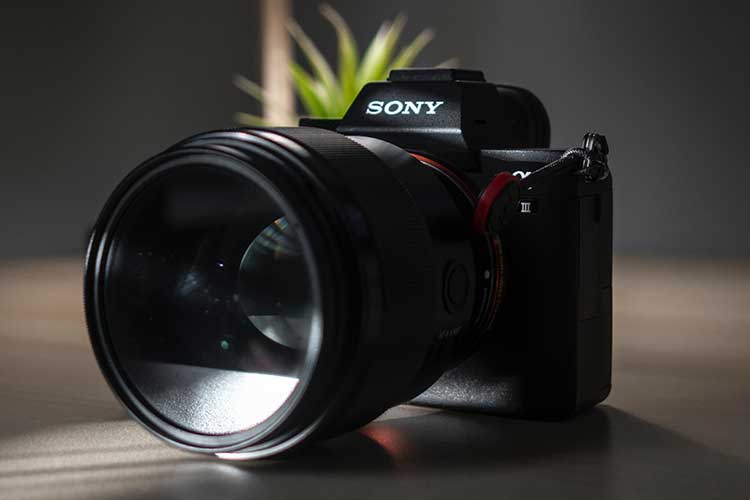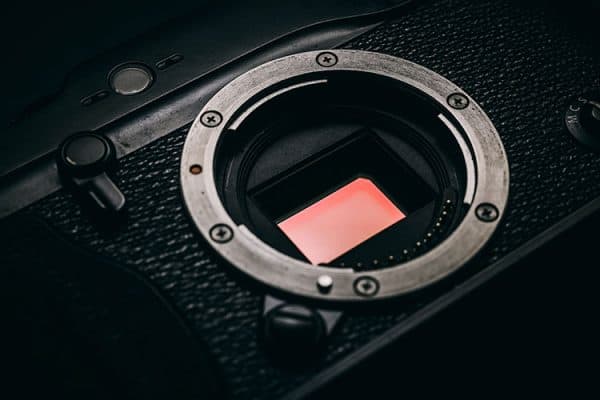When I was recently thinking of buying a new camera, I wanted to shoot more in low light – so I started looking into mirrorless cameras. I did some research to find out if mirrorless cameras truly do shoot better photos in low light.
So, are mirrorless cameras better in low light? Generally speaking, mirrorless cameras will out-perform regular “point-and-click” cameras when it comes to low light or darker situations. The reason is that a mirrorless camera has a larger sensor, and those sensors will allow for better performance when you have less light. A mirrorless camera is not better than most DSLR cameras in low light, because most DSLRs have larger sensors.
Contents
Sensor Size
As already mentioned, the sensor size is what allows mirrorless cameras to out-perform a regular point and click version in low light areas.
This sensor size also allows for varying levels of performance when shooting in different environments.
Some mirrorless models have sensors that are different sizes, and that can muddle the waters a bit.
The mirrorless camera models that opt to not put quite such a large sensor in their camera will see lower performance in varying lights and especially dim lights go down. Those that have sensors almost as big as a DSLR (Digital Single-Lens Reflex Camera) camera can see performance right on par with those models.
It can vary a bit from brand to brand and from model to model so make sure you check the specs if you are going to be buying a new model soon.
Mirrorless cameras include cameras that have a sensor size as small as 6 x 4 mm or as large as 17 x 13 mm.
Certain models can even go up to higher ranges just as large as DSLR’s so you could really get up to 35 x 24 mm with a mirrorless camera. Those bigger sizes are going to keep getting improved performance when you take a picture in the dark.
This is also going to create less noise in your image when you take a picture with a mirrorless camera – a definite plus if you are looking for those focused amazing photos you want to take.
Some cameras can get by shooting in dark areas even with smaller sensor sizes, it’s not always an all or nothing campaign, however generally speaking – if this is a big concern you have, it would make a lot of sense to go with the bigger sensor.
Lens System
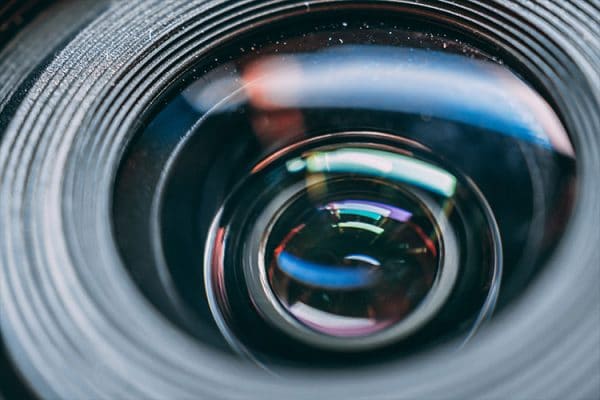
One of the most unique qualities of a mirrorless camera is the way its lens system works. This makes it quite different from the compact cameras out there in the world.
If you haven’t seen this lens system in action, it could very possibly change the way you think about photography and you may get on board with the mirrorless camera movement.
The system has interchangeable lenses and so you can tailor your camera to what kind of shot you’re taking.
For example, for one photo you might use a macro lens, but on another, you could use a wide angle lens. The next shot you may want to use a zoom lens, it just depends on the situation and that lets you be in control as the photographer.
For those that are looking to get the exact right fit and look when they’re taking a photo, that’s going to be a big plus for the lens system in a mirrorless camera.
The amount of variability allows you to nail down a much more exact focus and if you look at sample photos, you will see just how much this can really do for the clarity and crispness of a photo.
As the industry grows and mirrorless cameras become more popular, you will find that more lens types and the quality of lenses will just continue to grow and grow.
A lot of people even have lenses from their past that they can use in these mirrorless cameras, so if you’re resourceful that would be a big plus.
The interchangeable lens system really makes mirrorless cameras unique and for a focused photographer who can experiment and really learn the system on their own, you’re going to see the benefit of extremely sharp photos that will just improve your craft.
Auto Focus

The main way that mirrorless cameras focus on their targets for excellent photographs is they use a method known as “contrast detection”.
Honestly, this sounds exactly like what you’re thinking if you know the definition of those two words.
The way a mirrorless camera comes completely into focus is by separating pixels and when it sees there is a significant separation, it uses that measurement to put the main object into focus.
That’s an extremely impressive, interesting, but also can be a difficult technology to use.
Compared to some DSLRs, you could find that this version of autofocus takes a bit longer than the phase detection that those models use.
Phase detection uses the mirror (that mirrorless cameras are missing, obviously) inside of a DSLR to figure out how much light is being put out or absorbed by certain shapes and then divides that light to find an appropriate focus.
That happens a lot faster in DSLRs, and as far as low light is concerned, actually probably works a little bit better than mirrorless cameras in that department. However, mirrorless cameras still have the jump on compact cameras and can be used in low light effectively, especially if you know about this focus issue and are prepared to combat it with either time or appropriate lens switching.
The best news I can give on this subject is that new technology in mirrorless cameras is starting to fix these problems.
The technology is kind of a mixture of these two methods and its starting to bring mirrorless cameras up to par when it comes to their auto-focus feature. That’s excellent news for those looking at mirrorless cameras, and I wouldn’t get too focused on the downside of contrast detection.
I’d definitely consider one of these mixed models if I’m shooting in low light, but it would not rule out mirrorless cameras for me in any way.
Video Shooting
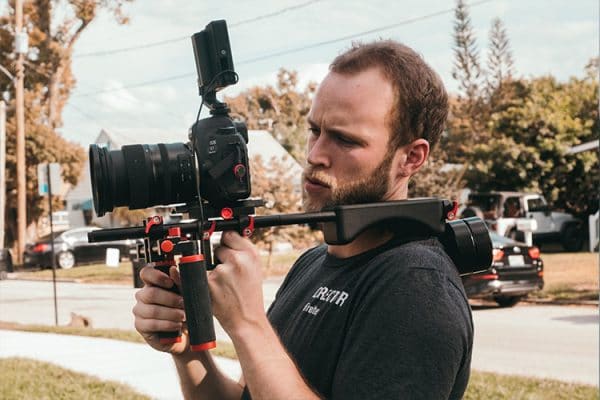
Mirrorless cameras stand out extremely well when it comes to video.
Most photographers today aren’t limiting themselves to the still pictures of the world, but they’re shooting video as well.
With the same logic that you wouldn’t want a blurry photograph, photographers of the world are not happy when they shoot a video that doesn’t have extremely high resolution.
The good news is here for mirrorless cameras, they’re almost dead even with DSLRs in this category and they can put their positives to work.
For starters, the mirrorless cameras that have a lot of different lenses can switch those out when they’re shooting video. That sounds obvious, but the benefit it can give the photographer is quite excellent.
As technology improves, there are mirrorless cameras out on the market right now that can shoot in 4K. Consider that 4K is pretty much becoming the new standard as technology catches up, that’s huge for photographers who need both great photo and video capabilities.
The contrasting focus in a mirrorless camera is what allows their videos to come out with such smooth finishes. That focus helps mirrorless cameras track moving objects and it’s almost magic the way they train their focus on something moving to give you a clear shot each and every time.
At the same time, a mirrorless camera isn’t very heavy at all and that lets you shoot some video or track your subjects for a long time without getting tired in the least. While some of you may have tons of muscles and find that laughable, others will find it quite important.
One of the biggest pros that come up again and again with a mirrorless camera is the amount of control you have over the whole creating process. When you shoot video with a mirrorless camera, the amount of adjustments you make just means your videos are going to come out exactly the way you want them, and there’s no better feeling than a perfect shot.
Viewfinders
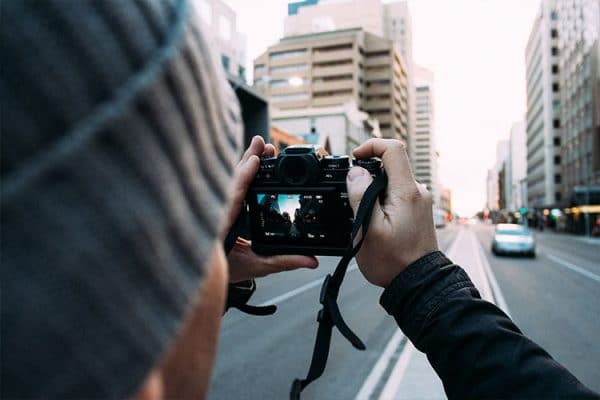
As we’ve gone over, clearly there is no mirror in a mirrorless camera. That affects the viewfinder from the different models of camera that you may have had in the past.
The viewfinder in a mirrorless camera is something called an EVF – simply standing for electronic viewfinder.
There’s a big con to using an EVF and we’re going to start with that right away.
When using an EVF in a mirrorless camera, you could find that you have a bit of a stumble or a delay. That little bit of downtime where you’re not seeing what’s actually happening can be extremely agitating to photographers who are trying to move quickly.
If you have some more time for your shot, and you can line things up – you won’t mind using an EVF quite so much.
Some of the higher end models of mirrorless cameras have already eliminated these delays from play, so you may want to consider looking at specific models if this is a big consideration for you.
EVF’s biggest plus is the fact that it enhances your focusing ability. Think about everything needed to focus a photograph manually. It takes a lot of work and skill, but with an EVF now you’re getting computer feedback about the process and having a computer help you put things into focus.
I wouldn’t say that it takes the human touch out of the process by any means, I would actually say that it’s going to improve your photo-taking process and just add to the natural skills that you already have as a photographer.
On a minor note, an EVF is using a screen and a computer system to let you know what’s going on – and as with any computer screen or anything like that, you’re going to be adding some wear on your battery life.
A lot of people don’t think that’s a big deal, but I like to bring it up because just like a phone screen that is left on all day, if you’re using an EVF it is just naturally going to wear down a bit faster than you may be used to, so it’s good to have that information.
EVF’s are great tools to let you see what’s really going to end up happening with your picture, and so even with the downsides, I really like the EVF as a tool and an assist to what’s going on with the image as a photographer.
Do DSLRs replace Mirrorless Cameras?
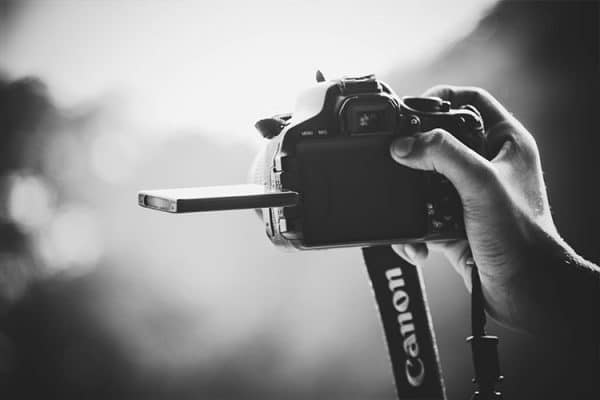
While the two cameras are often talked about and go head-to-head in many categories, I would hesitate to say that one camera replaces the other.
To get more to the point, each of these cameras has positives and benefits that the other one doesn’t.
Even when you get down to the basic specs of each product, you can see that DSLRs end up needing less light in general than their counterpart mirrorless cameras.
Also, in general terms – DSLRs usually have larger sensor sizes than mirrorless cameras, but again that doesn’t always have to be the case.
What I would recommend if you have a heavy interest in both is to research some of the best models in each category so that you have something specific to compare. These cameras are pretty large investments, so it does make sense to do your research.
Will EVF completely change the way I take pictures?
No, EVF is simply a guide to help you along the way.
You’re still in charge as the photographer and you still need to set things up as you normally would. I wouldn’t consider the EVF to be a magic wand or anything like that – you still have to do the work & I think most photographers are appreciative of that.
Will I need to buy a bunch of different lenses for a mirrorless camera?
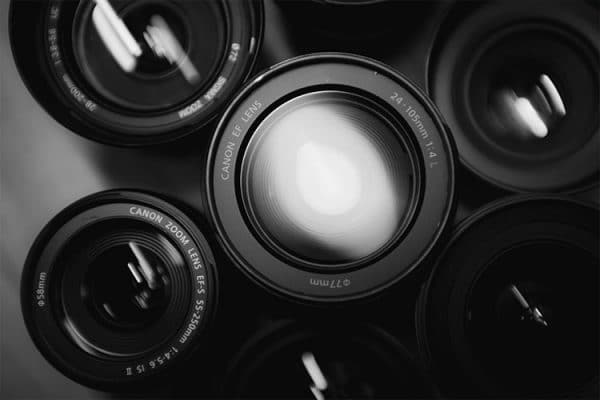
One of the bigger advantages of a mirrorless camera is the chance to use a different lens in a unique situation, however, I believe you will be successful without buying every single lens out there on the marketplace.
You have to do what’s comfortable for you – personally, I like the advantage of having different lens choices to pick from. I think most people will want to have at least a few in their arsenal if they pick a mirrorless camera.
